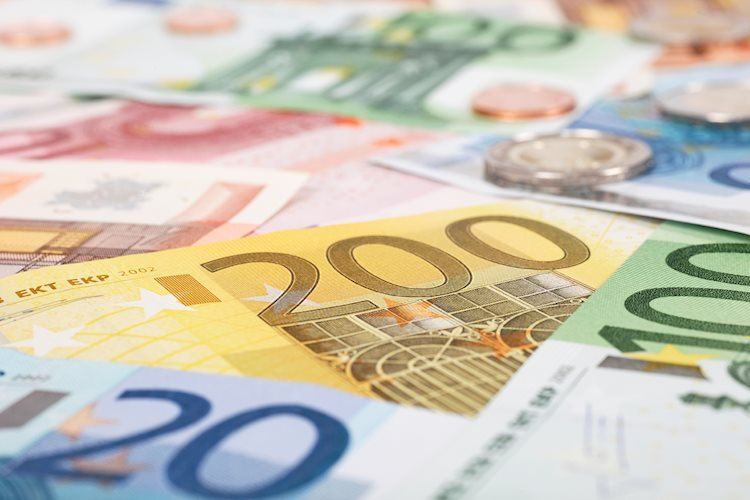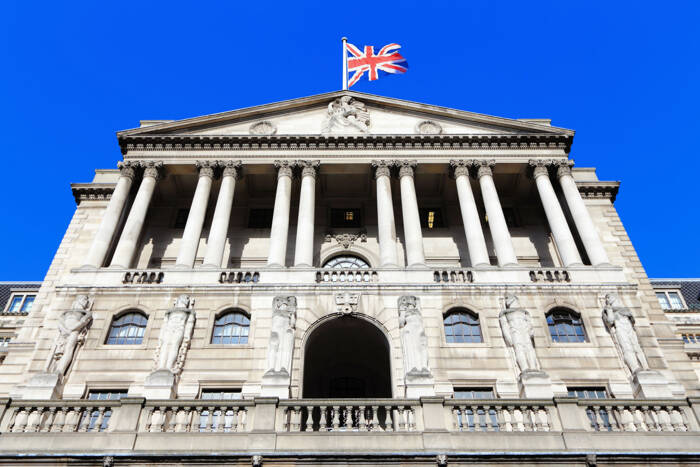Here is what you need to know on Thursday, May 23:
The US Dollar (USD) capitalized on the upbeat PMI data from the US on Thursday, and the USD Index closed the fourth consecutive day in positive territory. Durable Goods Orders data for April and the revision to the University of Michigan’s Consumer Sentiment Survey for May will be featured in the US economic docket ahead of the weekend.
S&P Global Composite PMI climbed to 54.4 in May’s flash estimate from 51.3 in April, showing that the business activity continued to expand at an accelerating pace. Manufacturing and Services PMIs improved to 50.9 and 54.8, respectively. Following a downward correction seen in the European trading hours, the USD Index regained its traction and climbed above 105.00 for the first time in 10 days. Early Friday, the index holds steady near Thursday’s closing level, while the benchmark 10-year US Treasury bond yield fluctuates below 4.5% after gaining more than 1% on Thursday.
US Dollar PRICE This week
The table below shows the percentage change of US Dollar (USD) against listed major currencies this week. US Dollar was the strongest against the Australian Dollar.
USD
EUR
GBP
JPY
CAD
AUD
NZD
CHF
USD
0.49%
0.06%
0.89%
0.86%
1.42%
0.65%
0.62%
EUR
-0.49%
-0.46%
0.46%
0.37%
0.93%
0.14%
0.14%
GBP
-0.06%
0.46%
0.76%
0.88%
1.41%
0.60%
0.58%
JPY
-0.89%
-0.46%
-0.76%
-0.06%
0.52%
-0.24%
-0.27%
CAD
-0.86%
-0.37%
-0.88%
0.06%
0.50%
-0.22%
-0.24%
AUD
-1.42%
-0.93%
-1.41%
-0.52%
-0.50%
-0.80%
-0.79%
NZD
-0.65%
-0.14%
-0.60%
0.24%
0.22%
0.80%
-0.03%
CHF
-0.62%
-0.14%
-0.58%
0.27%
0.24%
0.79%
0.03%
The heat map shows percentage changes of major currencies against each other. The base currency is picked from the left column, while the quote currency is picked from the top row. For example, if you pick the US Dollar from the left column and move along the horizontal line to the Japanese Yen, the percentage change displayed in the box will represent USD (base)/JPY (quote).
During the Asian trading hours, the data from Japan showed that the National Consumer Price Index (CPI) rose 2.5% on a yearly basis in April, following the 2.7% growth recorded in March. In the same period, National CPI ex Fresh Food rose 2.2%, matching the market expectation. USD/JPY showed no reaction to this data and extended its sideways grind at around 157.00.
Reserve Bank of New Zealand (RBNZ) Deputy Governor Hawkesby said on Friday that lowering interest rates was not a part of near-term discussions and noted that there was a lot of uncertainty about tradable inflation going forward. After rising to its highest level in over two months above 0.6150 on the RBNZ’s hawkish hold earlier in the week, NZD/USD lost its traction and retreated to the 0.6100 area.
The UK’s Office for National Statistics reported that Retail Sales declined 2.3% on a monthly basis in April. This reading followed the 0.2% contraction recorded in March and came in much worse than the market expectation for a decrease of 0.4%. GBP/USD stays under modest bearish pressure after the disappointing data and trades below 1.2700.
EUR/USD registered small losses on Thursday but managed to hold above 1.0800. The pair fluctuates in a tight range at around 1.0820 in the European morning on Friday. Germany’s Destatis confirmed earlier in the day that the real Gross Domestic Product expanded 0.2% on a quarterly basis in the first quarter.
After suffering heavy losses on Wednesday, Gold extended its slide on Thursday and fell more than 2% on the day. XAU/USD stages a technical correction early Friday and trades below $2,340.
US Dollar FAQs
The US Dollar (USD) is the official currency of the United States of America, and the ‘de facto’ currency of a significant number of other countries where it is found in circulation alongside local notes. It is the most heavily traded currency in the world, accounting for over 88% of all global foreign exchange turnover, or an average of $6.6 trillion in transactions per day, according to data from 2022. Following the second world war, the USD took over from the British Pound as the world’s reserve currency. For most of its history, the US Dollar was backed by Gold, until the Bretton Woods Agreement in 1971 when the Gold Standard went away.
The most important single factor impacting on the value of the US Dollar is monetary policy, which is shaped by the Federal Reserve (Fed). The Fed has two mandates: to achieve price stability (control inflation) and foster full employment. Its primary tool to achieve these two goals is by adjusting interest rates. When prices are rising too quickly and inflation is above the Fed’s 2% target, the Fed will raise rates, which helps the USD value. When inflation falls below 2% or the Unemployment Rate is too high, the Fed may lower interest rates, which weighs on the Greenback.
In extreme situations, the Federal Reserve can also print more Dollars and enact quantitative easing (QE). QE is the process by which the Fed substantially increases the flow of credit in a stuck financial system. It is a non-standard policy measure used when credit has dried up because banks will not lend to each other (out of the fear of counterparty default). It is a last resort when simply lowering interest rates is unlikely to achieve the necessary result. It was the Fed’s weapon of choice to combat the credit crunch that occurred during the Great Financial Crisis in 2008. It involves the Fed printing more Dollars and using them to buy US government bonds predominantly from financial institutions. QE usually leads to a weaker US Dollar.
Quantitative tightening (QT) is the reverse process whereby the Federal Reserve stops buying bonds from financial institutions and does not reinvest the principal from the bonds it holds maturing in new purchases. It is usually positive for the US Dollar.
Share:
Feed news
Information on these pages contains forward-looking statements that involve risks and uncertainties. Markets and instruments profiled on this page are for informational purposes only and should not in any way come across as a recommendation to buy or sell in these assets. You should do your own thorough research before making any investment decisions. FXStreet does not in any way guarantee that this information is free from mistakes, errors, or material misstatements. It also does not guarantee that this information is of a timely nature. Investing in Open Markets involves a great deal of risk, including the loss of all or a portion of your investment, as well as emotional distress. All risks, losses and costs associated with investing, including total loss of principal, are your responsibility. The views and opinions expressed in this article are those of the authors and do not necessarily reflect the official policy or position of FXStreet nor its advertisers. The author will not be held responsible for information that is found at the end of links posted on this page.
If not otherwise explicitly mentioned in the body of the article, at the time of writing, the author has no position in any stock mentioned in this article and no business relationship with any company mentioned. The author has not received compensation for writing this article, other than from FXStreet.
FXStreet and the author do not provide personalized recommendations. The author makes no representations as to the accuracy, completeness, or suitability of this information. FXStreet and the author will not be liable for any errors, omissions or any losses, injuries or damages arising from this information and its display or use. Errors and omissions excepted.
The author and FXStreet are not registered investment advisors and nothing in this article is intended to be investment advice.





